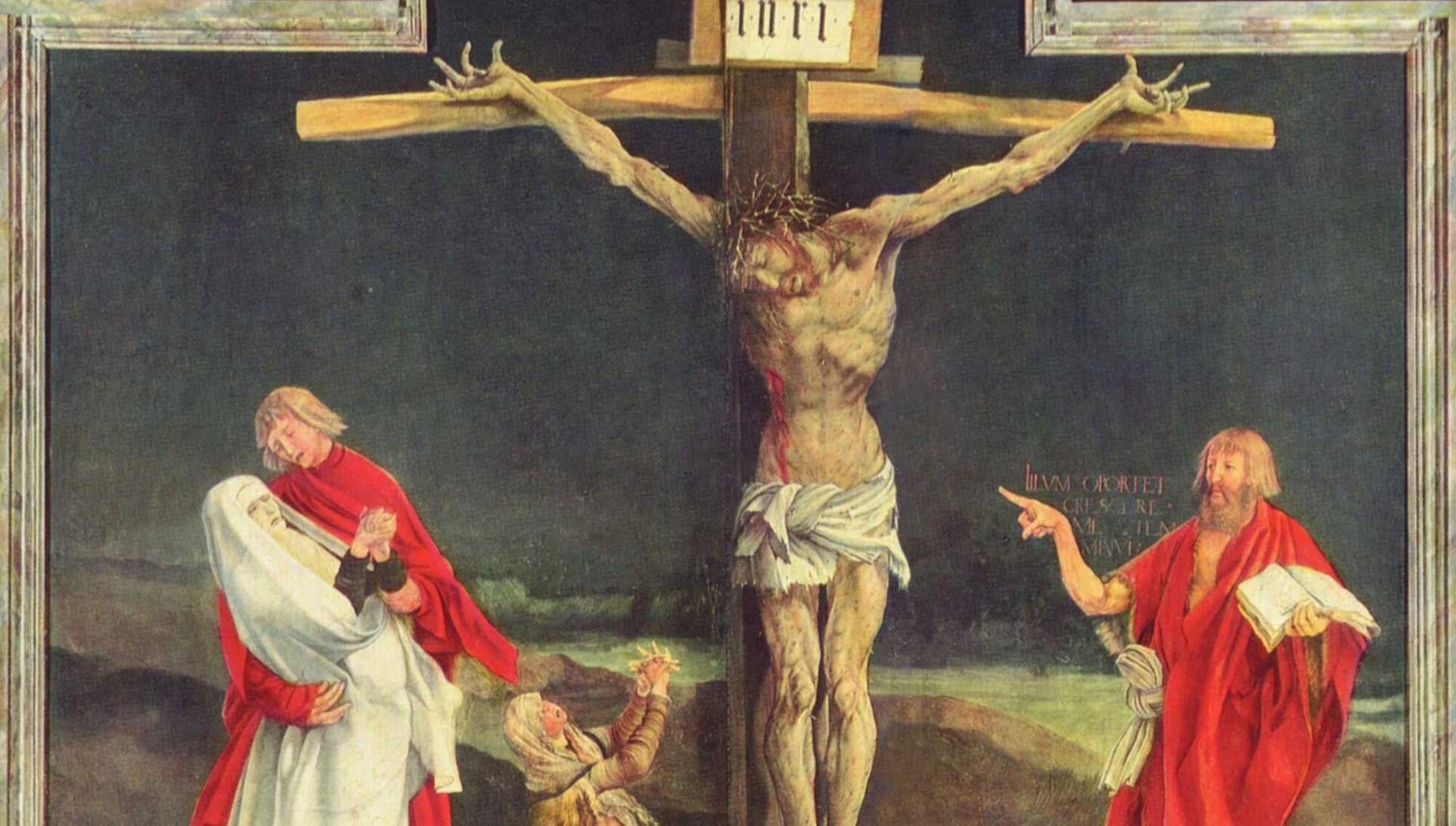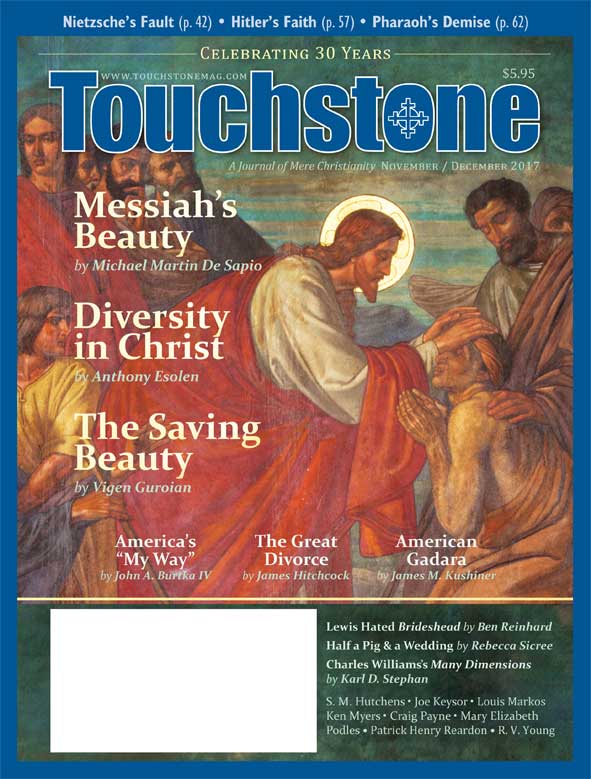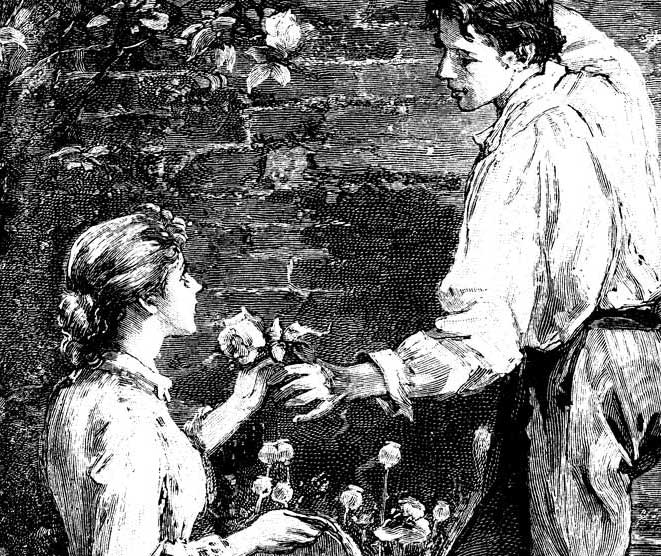View
The Messiah's Beauty
Michael Martin De Sapio on Benedict XVI on the Fairest of the Sons of Men
Throughout his life Pope Emeritus Benedict XVI has impressed on us the importance of beauty as a pathway to God—in the liturgy and elsewhere. This side of Benedict is given eloquent expression in "Wounded by the Arrow of Beauty: The Cross and the New 'Aesthetics' of Faith," which was written when he was still Cardinal Joseph Ratzinger; it appears as a chapter in the book On the Way to Jesus Christ. It is a most affecting piece, one that opens windows onto a number of new vistas for the searcher of beauty (of which I will have more to say later).
Benedict takes as his starting point two starkly contrasting texts for the Passion Week liturgy:
"You are the fairest of the children of men and graciousness is poured upon your lips." (Ps. 45:2a)
"He had neither beauty nor majesty, nothing to attract our eyes." (Is. 53:2)
Church tradition has assigned these texts the status of messianic prophecies. The first, from a royal wedding psalm, describes the resplendent beauty of Christ—in particular the inner beauty of his teaching. The second brings before our eyes the bruised and battered Christ of the Passion, whom Pilate presented to the crowd, exclaiming "Ecce homo!"—"Behold the man!"
Benedict attempts to reconcile the seeming contradiction between these two prophecies. He discusses the classical Grecian ideal of beauty and how Christianity brought in its place a new conception of beauty, which included suffering and the Cross. He concludes that in Christ, the Grecian ideal is not destroyed but transcended: Christ is the one who "can risk setting aside his external beauty in order to proclaim, in this very way, the truth of beauty."
Benedict says that the question of whether Christ was beautiful was an important one to the church fathers, although he doesn't go into any more detail on the subject. Perhaps it is not unreasonable to suppose that the Son of God possessed perfect corporeal beauty, much like a Greek hero. But where Christ transcended Apollo was in laying aside his beauty for our sake to meet ugliness and sin head-on, in this very way showing us the truth of beauty. The story does not end there, however, for Christ at last showed us his glorified resurrected body. That we Christians believe in a bodily resurrection, in fact, affirms the imperishable beauty of what God has made.
Tricks of the Devil
Benedict proposes two ways in which the face of beauty can be distorted—two dangers that Christianity must oppose. The first is the "cult of the ugly." Modern man—partly as a response to the brutality or banality of the world around him—comes to doubt whether beauty is the true reality after all and wonders if ugliness is perhaps not the real truth of the universe. The cult of the ugly turns Greek idealism upside down. The depiction of the "cruel, the base and the vulgar" (in Benedict's words) becomes the norm.
It is easy to connect Benedict's "cult of the ugly" with much of the visual art, music, literary fiction, and movies of recent times. Our dominant mode today is a base naturalism, which seeks merely to reflect "the way things are," which is, it is tacitly assumed, without any transcendent purpose. In fiction, the cult of the ugly expresses itself in an unrelentingly cynical or pessimistic worldview, devoid of the redemptive. In music (both serious and popular), there is a flight from concord toward noise. In architecture, we have drab geometrical structures devoid of ornament. Meanwhile, the very search for beauty is scorned by some in the art world as a retreat into escapism and unreality.
On the other side of the "cult of the ugly" lies the cult of false beauty. Here Benedict's argument becomes more subtle: the Christian is not simply to distinguish beauty from ugliness, but must also differentiate between true beauty and deceptive beauty. When beauty's transcendent character—its connection to God and to the Logos—is not recognized, it becomes mere prettiness, superficial and cosmetic. The result is that society becomes strangely indifferent to beauty, relegating it to the status of the trivial and dispensable. Benedict speaks of a "superficial aestheticism and irrationality." One recalls how beauty and art can be debased to the level of a social accessory or simply become the vehicle for an irrational spewing-forth of the artist's subjective feelings. Either way, the serious and God-like character of beauty is not given its due.
True beauty, Benedict reminds us, is ennobling; it leads us outside ourselves to encounter the Other; it is geared toward the contemplation of Being. False beauty, by contrast, functions as seduction, as an incitement to lust and power-seeking, and it closes the beholder in on himself. Benedict traces this false beauty back to Genesis, when Eve grasped the apple proffered her by the serpent, finding it "delightful to the eyes." He also evokes the delusion of eroticism masquerading as beauty, as in advertising billboards that tempt men to selfishly seek satisfaction. Such "beauty" is mere sensual allurement, devoid of transcendence and of the human element that leads us to encounter the Divine Person.
Michael Martin De Sapio is a writer and classical musician from Alexandria, Virginia. He is a frequent contributor to such journals as Crisis, Fanfare, and The Imaginative Conservative on topics ranging from religion to cultural history and music. As a musician, he specializes in the Baroque violin and is also an avid amateur chorister in Roman Catholic churches.
bulk subscriptions
Order Touchstone subscriptions in bulk and save $10 per sub! Each subscription includes 6 issues of Touchstone plus full online access to touchstonemag.com—including archives, videos, and pdf downloads of recent issues for only $29.95 each! Great for churches or study groups.
Transactions will be processed on a secure server.
more on christianity from the online archives
more from the online archives
calling all readers
Please Donate
"There are magazines worth reading but few worth saving . . . Touchstone is just such a magazine."
—Alice von Hildebrand
"Here we do not concede one square millimeter of territory to falsehood, folly, contemporary sentimentality, or fashion. We speak the truth, and let God be our judge. . . . Touchstone is the one committedly Christian conservative journal."
—Anthony Esolen, Touchstone senior editor














